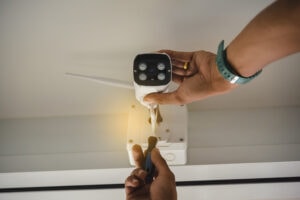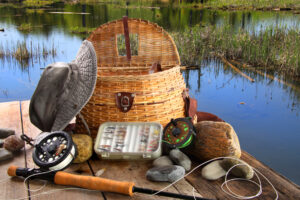Your dog or cat may be beloved family member, but heartless thieves are often on the lookout for expensive and popular breeds to sell for quick cash. Between 300 and 400 pets are stolen each year in Victoria.
Waking up or coming home to find your pet missing is devastating. Here are our top tips for protecting your precious furbabies.
1. Don't leave your dog alone in public.
- Leaving pets unattended is a main cause of theft.
- Think twice before leaving your dog tied up outside a shop, even for a few minutes. If you can’t take it everywhere with you, then consider leaving it at home and take it for a walk later.
- Never leave your pet alone in your car – thieves can take the opportunity to smash the window and snatch your pet. And on hot days leaving your pet inside your car can kill them.
- If you have to take your pet with your on your errands, ask someone to go with you so they can sit with them and keep an eye on them while you’re busy.
2. Keep an eye on your pet at all times.
- If you lose sight of your dog or cat, it only takes a moment for them to be snatched.
- Only let your dog off leash in a park or at the beach if they stay within view and will come to you when called.
- If you’re unsure whether they’ll come back to you or you’re in an unfamiliar area, use an extending lead. If they can’t be trusted off leash, then don’t risk it.
- If you go away on vacation, try to choose pet friendly locations so you can take them with you. If you can’t, it’s best to leave them with family friends or a trusted pet sitter, or book them into a reputable boarding facility, rather than leave them at your empty home.
3. Secure your yard to keep thieves out and your pets in.
- Backyards that strangers can see and access, can be pet theft hotspots. Only leave your pet in your yard if can be well secured and can contain your pet.
- Make sure your fences are solid and difficult for a thief to climb over or your pet to get out.
- Put strong locks on front and side gates and keep all garage doors locked.
- When your pet is in your yard, make sure it can’t be seen from the street.
- Limit your pet’s outdoor access when you’re not home. Lock the door or cat flap when you’re not around.
- Make sure you always supervise your pet when it’s in your yard, especially if it’s not fenced. Don’t let them roam the neighbourhood.
- Keep cats inside behind a locked door or in a secure outdoor cat enclosure.
4. Keep pet doors and human doors locked.
- When your leave your home, make sure all your doors and windows are locked and keep your pet safe and secure inside. Make sure it can’t be seen from the street.
- A pet door might be convenient, but it can also be a security risk. When your dog or cat is inside, keep pet doors, external doors and windows locked.
- Consider investing in a pet-friendly security alarm for your home.
5. Mix up your daily walks.
- Vary the time of day, place and route when you walk your dog (or cat), so that potential thieves loitering in the area don’t become familiar with your routine. Some dogs are targeted and snatched during walks. Thieves use these walking patterns to plan when to strike.
6. Don't overshare information about your pet.
- Beware of strangers who start asking you too many questions about your dog or seem to be paying it a lot of attention.
- Be careful about what you post about your pets on social media — if you’re uploading photos of them, make sure you’re not giving away info that could disclose where you live.
- If your pet is a high-value breed, don’t broadcast much you paid for it.
- Consider removing any car stickers, signs, doormats or outdoor decorations that might advertise your pet’s breed.
7. Thoroughly research pet care providers.
- Don’t hand your pet over to just anyone. Before trusting your pet with a new dog walker, pet sitter, groomer or trainer, do your research – check references and reviews and ask for photo identification. See if your vet can recommend a professional they know and trust.
- If leaving your pet in boarding facility, make sure it is registered as a domestic animal business with the local council. Do plenty of research, check reviews and testimonials, tour the facility beforehand and check whether your vet, family members or friends, know the business or have used them.
8. Dexex your pet.
- Desex your dog or cat to make them less desirable to thieves. Sometimes intact pets are stolen so that thieves can breed them and make money from selling their puppies or kittens.
9. Keep your pet's ID up to date.
- Make sure your pet is microchipped, registered with your local council and that you keep the details up-to-date, especially if you move house.
- Always make sure your pet is wearing a collar and ID tag with your name and mobile number on it.
- Consider getting a GPS tracking device that can be attached to the collar and linked with an app on your phone.
- Don’t put your pet’s name on its collar as a potential thief could use it to call them over.
- Record your pet’s details on PropertyVAULT. You can include what type of pet it is, its name, breed and gender, whether it’s desexed, microchipped and registered, provide a description and upload a photo. If your pet is taken, you can also flag it as stolen. .
10. Take lots of photos of your pet.
- Take clear photographs of your pet from various angles and update them regularly. They’ll come in handy if your dog or cat is lost or stolen.
- Make a note of any features that might distinguish your dog pet from others.
- Make sure you also have lots of photographs of yourself with your pet, so you can prove you own it, if necessary.
If the worst should happen and your pet is stolen.
- Report it to the Police Assistance Line and your local council.
- Check “found pets” listings on rescue organisations and pounds.
- Check pets for sale on online sites like Gumtree.
- Make a flyer with a photo and details of your pet and letterbox every home in your neighbourhood.
- Visit all your neighbours and talk to them directly about your missing pet. Ask them if they have any security footage from around the time your pet was stolen.
- Advise local vets, rescue centres, shelters.
- Advise the microchip company so they can flag your dog’s record as “stolen”.
- If you’ve record your pet on PropertyVAULT, mark it as stolen.
- Spread the word on social media, it may help make your dog “too hot to handle”.
- Join local “lost pets” groups on Facebook and other lost and found pet websites. Post details and photos of your dog or cat and ask people to share your post.
If you're buying a pet, make sure it's not stolen.
If you’re buying a pet, make sure it’s not stolen
- In Victoria, anyone selling or giving away a dog or cat, even to a family member or friend, must enrol with the Pet Exchange Register (PER) and ensure the pet is microchipped. The microchip number, along with the PER source number, must be included in any advertisement.
- If you’re getting a dog or cat, check the seller is valid by looking up their source number on the Pet Exchange Register.
- Make every effort to research the animal’s history to make sure they haven’t been stolen.
- When you’re taking your new pet for its initial health check, ask the vet to scan the microchip.







